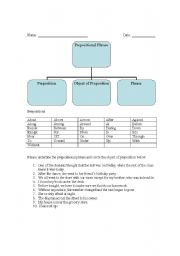
|
Identifying Prepositions
This worksheet uses the first two levels of Blooms taxonomy to help the students understand prepositions. I would first introduce prepositions with objects in the room to explain that prepositions show the relationship between the object and another word in the sentence. For example: show that the pen is ON THE FLOOR. The relationship is between ...
Level: elementary
Age: 10-17
Type: worksheet
Downloads: 1
|
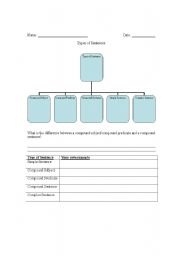
|
Types of Sentences: Simple, Compound, Complex
I used this graphic organizer to recall prior knowledge. The students had learned simple sentence, compound sentencs, and complex sentences. After this worksheet I introduced compound-complex sentences.
Level: intermediate
Age: 11-12
Type: worksheet
Downloads: 16
|
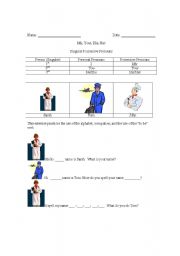
|
Singular Possessive Adjectives
This exercise builds on prior knowledge. The previous lesson introduced the alphabet and spelling. Building on this information, the teacher introduces the possessive adjectives in relation to personal pronouns. I would suggest that this worksheet be used as an informal assessment after a mini-lesson on possessive adjectives.
Level: elementary
Age: 6-17
Type: worksheet
Downloads: 0
|
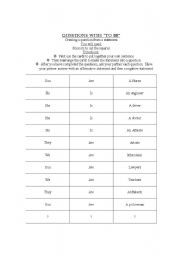
|
Making questions from statements using the verb "to be"
These are cards that I have used in class to teach beginning English speakers the formation of questions with the verb to be. I cut out each of the squares and put the group of flashcards in a zip lock bag for each of my students. I asked them to use the cards to make sentences first. This way the students are practicing the subject verb agreeme...
Level: elementary
Age: 7-17
Type: activity-card
Downloads: 0
|
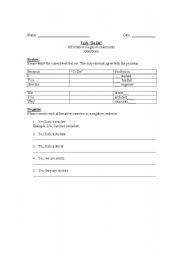
|
Review of "to be"
This worksheet builds on prior knowledge. First, the students must conjugate the verb "to be." The students then use the verb to make negative statements. Finally at the end of the worksheet, the students must look at the picture of a profession and write their own affirmative/negative sentence using "but." The worksheet will be used in my clas...
Level: elementary
Age: 7-17
Type: worksheet
Downloads: 1
|
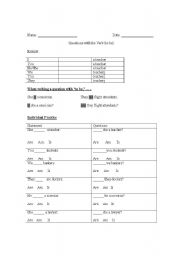
|
Questions with the verb "to be"
This worksheet is used an introduction to writing questions with the verb "to be." It helps students contrast the verb placement in a statement as opposed to the verb placement in a question. It also builds on prior knowledge of the "to be" verb conjugation with a designated pronoun.
Level: elementary
Age: 6-17
Type: worksheet
Downloads: 3
|
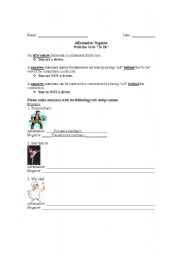
|
Negitive and Affirmative Statements using the verb "to be"
This worksheet is used to teach students to write sentences using the verb "to be" in an affirmative statement as well as a negative statement. I use it to build on prior knowledge of the "to be" verb as well as an introduction to professions.
Level: elementary
Age: 6-17
Type: worksheet
Downloads: 1
|
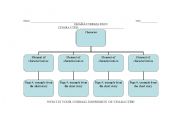
|
elements of characterization
This worksheet it built to help students dissect the protagonist in a piece of reading. The students are asked to list the elements of characterization and then refer to the pages in the work that defend each element.
Level: elementary
Age: 11-17
Type: worksheet
Downloads: 0
|
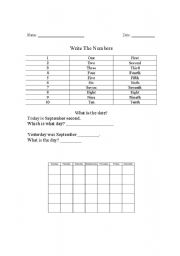
|
Numbers and Months
This is a review sheet to teach numbers as they relate to months and dates. This worksheet is an appropriate teaching tool for the introduction of the material.
Level: elementary
Age: 8-17
Type: worksheet
Downloads: 0
|
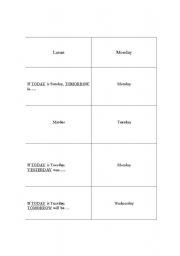
|
Flashcard/Days of the week
I printed off this worksheet and then had the students fold the paper in half (hot dog style). The students were then able to use the worksheet as a flashcard and were able to quiz themselves.
Level: elementary
Age: 14-17
Type: flash-card
Downloads: 0
|